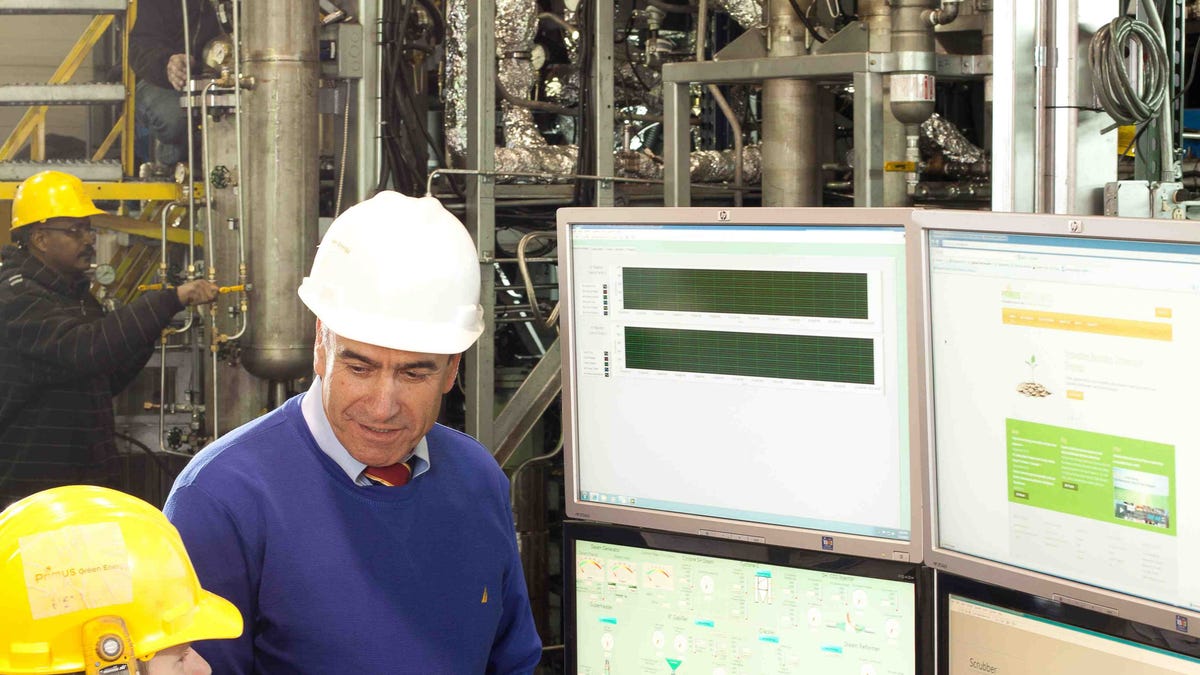Startup takes wood pellets in, turns out 'biogasoline'
Primus Green Energy has developed a process to convert wood pellets and natural gas into a high-octane gasoline. But can they do it cheap enough?

For a new crop of biofuel companies, ethanol is out and "biogasoline" is in.
One of them is Primus Green Energy, which plans to open a demonstration plant by the end of the year that will convert wood pellets into high-octane gasoline. The Hillsborough, N.J.-based company intends to raise $50 million to $100 million this year for a commercial-scale plant that would start producing at higher volumes in 2015.
Many companies break down biomass into sugar through different methods and then ferment that to make ethanol or speciality chemicals. Primus Green Energy and others are seeking to make drop-in replacements for gasoline, jet fuel, and other petroleum-derived chemicals, a strategy they hope will make their product more attractive and easier to feed into the existing fuel infrastructure.
The precursor to Primus Green Energy's process was first developed at Princeton University by co-founder and CTO Moshe Ben-Reuven, who raised $40 million in 2007 from holding company Israel Corp. to further develop the technology.
Its first small-scale demonstration plant puts wood pellets into a customized gasifier, a machine that heats the biomass to high temperature with super-heated steam and turns it into a gas mix of carbon monoxide and hydrogen.
Then natural gas is added and the mix is sent through an off-the-shelf scrubber to remove impurities, such as sulfur. Finally, the syngas goes through another vessel where catalysts convert the carbon-hydrogen gas into a bio-gasoline and water as a byproduct.
By turning out a high-octane gasoline, Primus Green Energy can sell its product to blenders and refiners for more than lower-octane products or ethanol, which is blended with gasoline, said George Boyajian, the company's vice president of business development.
The company's demonstration plant targeted for later this year is designed to engineer a system that's a continuous flow through the different steps, he added.
Many startup companies have developed new processes for converting plants to chemicals, but none have gotten beyond the demonstration stage and are producing at large scale. Range Fuels, for example, ran into technical problems that prevented it from converting wood chips into fuel as it had hoped. It went bankrupt last year and its assets were sold off.
The cost of operation is also big hurdle, even with the subsidies biofuel companies receive in the U.S. for producing renewable fuel.
In Primus Green Energy's case, some of its custom machines, notably the gasifier and the gas-to-liquid step, have yet to be done at scale, but Boyajian said operating at larger scale looks manageable. "We have done some things that are new inventions, but in terms of scaling up, it's engineering," he said.
Its next projects will help the company get a better grasp on the costs. Right now, it projects it can be profitable with crude oil at $60 a barrel. The company is working with engineering and construction company Bechtel to spec out the costs, Boyajian said.
One reason Boyajian is confident on costs is that the company's process is relatively efficient and productive. For each ton of biomass, the process converts about one quarter into usable fuel, he said. Also, its projected costs are about $2 a gallon and at today's prices, it can get about $3.30 for a high-octane fuel.
The company plans to locate its demonstration plant in Pennsylvania where wood can be converted into pellet fuel, as is done for home heating or for biomass-to-power plants. Its process can also work well with miscanthus or entirely on natural gas, giving the company some flexibility on feedstock.

